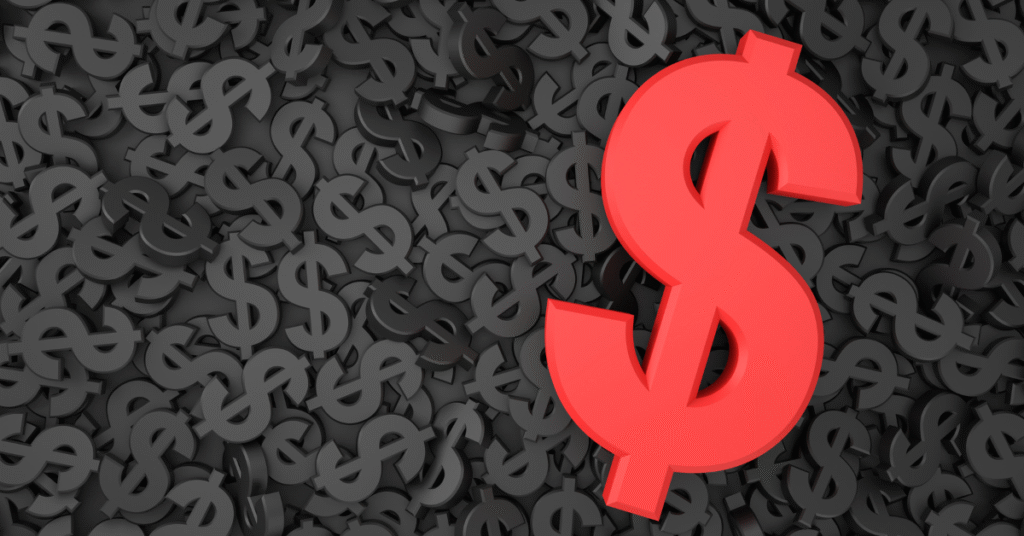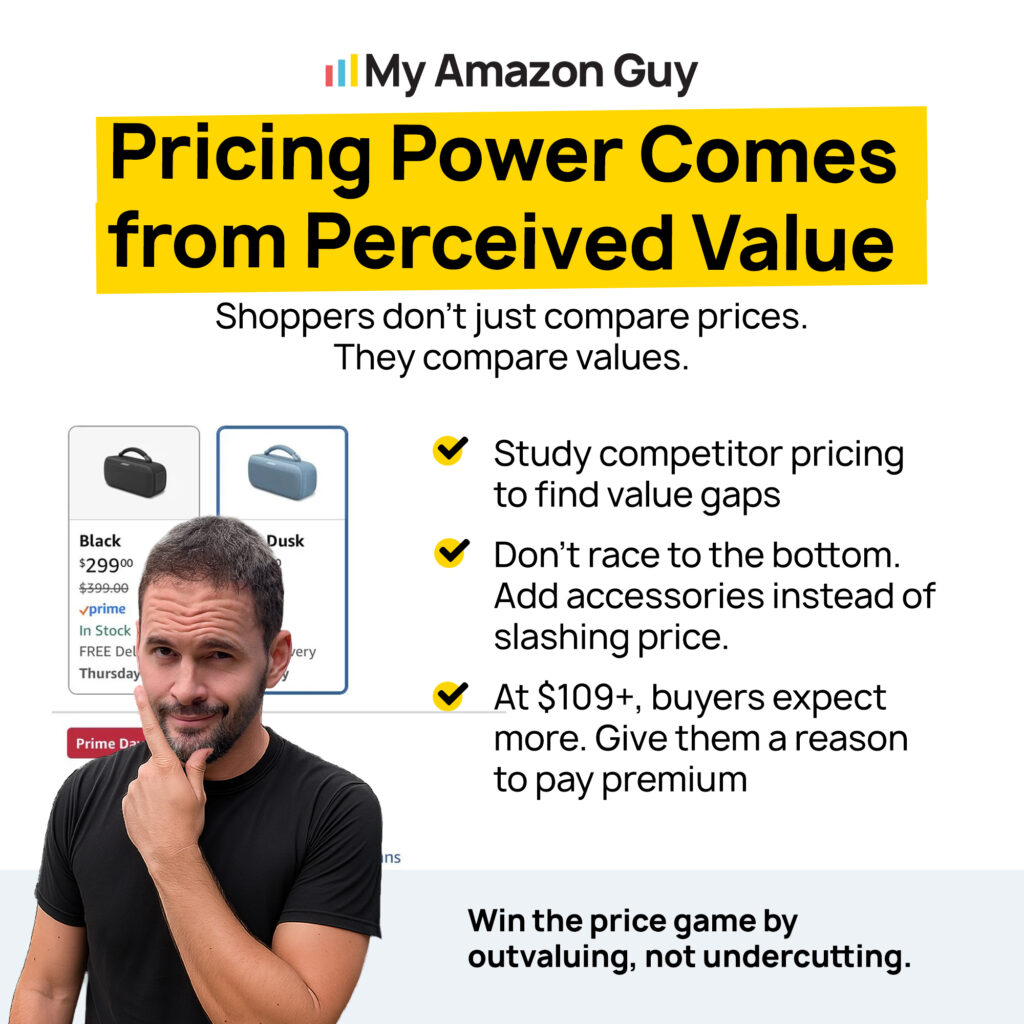
Last Updated: October 3, 2025
Are you asking yourself: “Does pricing affect ranking on Amazon?” The short answer is yes, but the real question is how it works and what it means for your products.
When setting your product’s price, most sellers focus on costs like capital, ad spend, and shipping. What often gets overlooked is how pricing also shapes your visibility in Amazon’s search results.
Price plays a big role in how Amazon’s algorithm decides which products to push forward. A smart price point can drive more sales, while the wrong one can hurt profits and slow down growth.
In this guide, our Amazon agency explains how pricing affects rankings, sales velocity, and Buy Box eligibility. You’ll also learn actionable strategies to set competitive prices that boost visibility and long-term profitability.
Table of Contents
Struggling to Rank on Amazon?
Your pricing strategy could be the reason your products aren’t showing up. Let our experts help you optimize for visibility and sales.
How Amazon’s Algorithm Considers Product Pricing
Amazon’s A10 algorithm is the system that decides which products appear in front of shoppers when they search on the marketplace. Since pricing heavily impacts buying decisions, A10 gives preference to competitively priced items because they are more likely to convert, generate sales velocity, and maintain visibility in search results.
The Role of Price in Sales Velocity and Conversion on Amazon
Price directly impacts sales velocity, or how fast your products sell, which is a key factor in Amazon’s ranking system. Since 93% of consumers compare prices online before buying, competitive pricing can strongly influence purchase decisions.
As your sales increase, Amazon rewards your listing with more visibility, creating a cycle that drives even more growth. A fair, balanced price also improves conversion rates by attracting clicks and reducing hesitation at checkout.
How Price Signals Competitiveness in Amazon Search Results
Amazon’s algorithm favors listings that are both relevant and competitively priced. Even small price differences can decide whether a shopper clicks on your product or a competitor’s.
Consistently competitive pricing signals better value to Amazon, which improves conversion rates and visibility. Using dynamic pricing to adjust in real-time also helps sellers stay competitive, secure stronger rankings, and win the Buy Box.
The Connection Between Pricing and the Amazon Buy Box
Winning the Buy Box is one of the biggest goals for Amazon sellers because it gives products prime visibility and a higher chance of conversion. Pricing is a key factor Amazon considers when deciding who earns that spot, making it essential to stay competitive without sacrificing profitability.
Why the Buy Box Matters for Ranking on Amazon
The Buy Box isn’t just about winning sales; it’s a major factor that affects how your product performs in Amazon’s search results. Here are the key reasons why holding the Buy Box directly impacts your ranking:
- Over 80% of Amazon sales come from the Buy Box, making it the main gateway for purchases.
- Products with the Buy Box are front and center, giving them maximum exposure to shoppers.
- A simplified “Add to Cart” option encourages more shoppers to complete the purchase.
- Consistently winning signals to Amazon that you’re a reliable seller with strong performance.
- Sponsored ads tied to a Buy Box winner gain better placement and higher click-through rates.
- Outshines competitors in crowded categories by securing the majority of sales.
How Price Influences Amazon Buy Box Eligibility
Pricing is one of the most important factors Amazon’s algorithm looks at when awarding the Buy Box. The system evaluates the total cost to the customer, including both the product price and shipping, to determine which offer provides the best value.
If your price is far above competitors, your product risks losing Buy Box eligibility altogether. In some cases, Amazon may even suppress your offer from the Buy Box if your price is significantly higher than the price found on external retail sites.
Want to Win the Buy Box More Often?
Competitive pricing is key to holding the Buy Box and driving conversions. We’ll build a pricing strategy that works for your brand.
Smart Pricing Strategies to Boost Your Amazon Rankings
With how much pricing can affect your product’s ranking on Amazon, having a clear pricing strategy is a must. The challenge is that it can be tough to build one if you’re not sure how pricing influences the algorithm, sales velocity, and the Buy Box, so here are six actionable tips to guide you.
Tip 1: Track and Test Price Changes
One of the most effective ways to understand how pricing impacts your ranking is by monitoring your sales rank (BSR) alongside your price points. By testing different prices over a set period, you can see whether lowering or raising your price improves visibility and conversions.
Tracking allows you to identify an equilibrium where your price maximizes profit without sacrificing competitiveness. Instead of blindly changing prices, you’ll have data that guides smart adjustments to keep both rankings and margins in check.
Tip 2: Keep an Eye on Competitor Pricing
Amazon’s algorithm compares your price directly to other sellers offering the same or similar products. If your listing consistently appears overpriced, your chances of ranking high or winning the Buy Box decrease significantly.
That said, competitive pricing doesn’t always mean being the cheapest. If your product has stronger reviews, better branding, or added value, you can justify charging slightly more while still staying competitive in the algorithm’s eyes.
Tip 3: Balance Short-Term Gains with Long-Term Margins
Dropping your price too aggressively can create a quick boost in sales velocity and ranking, but it’s not always sustainable. If your margins take too big a hit, you could end up in a price war that hurts profitability in the long run.
The smarter approach is to find a balance that drives sales without undercutting your bottom line. Consider inventory levels, lead times, and operating costs before making price cuts that could damage your business long-term.
Tip 4: Use Seasonal and Automated Pricing Adjustments
Amazon’s marketplace is highly dynamic, and prices can shift multiple times a day. Using repricing tools helps you stay competitive without manually checking and adjusting every few hours.
Seasonal pricing is also key such as lowering prices during peak events like Prime Day or holidays can increase sales velocity, while raising them during slower periods can help preserve margins. This combination keeps you both competitive and profitable.
Tip 5: Monitor Performance Metrics After Price Changes
Adjusting prices is only the first step; tracking how those changes affect sales, BSR, and Buy Box wins is essential. Without monitoring, you won’t know if your strategy is actually improving rankings or harming profitability.
Regularly reviewing performance metrics allows you to refine your pricing strategy over time. By analyzing results, you can identify trends, optimize prices, and make data-driven decisions that consistently boost visibility and sales.
Tip 6: Start with a Lower Launch Price to Build Momentum
When launching a new product, starting at a lower price can help generate initial sales velocity, which is critical to gaining visibility on Amazon. Since shoppers can’t immediately judge the quality of your product, a competitive introductory price encourages purchases and signals relevance to the algorithm.
Over time, you can gradually increase the price toward your target as your product earns reviews, conversions, and trust. This strategy allows you to build momentum without permanently undervaluing your product, giving you both short-term sales and long-term profitability.
Frequently Asked Questions
What is Amazon product ranking based on?
Amazon rankings are based on sales velocity, conversion rates, relevance to search terms, reviews, and price competitiveness. The A10 algorithm weighs all of these factors together to decide where your product shows up.
How often are Amazon rankings updated?
Rankings update frequently, and sometimes multiple times per hour. Any changes in sales, reviews, or price can quickly shift your position.
Can I raise prices without hurting my ranking on Amazon?
Yes, but only if your conversion rate stays strong. If higher prices reduce sales velocity, your ranking will drop.
The Hidden Driver of Your Amazon Rankings
How you price your products can be the deciding factor in whether your listings rank high or get buried in Amazon search results. Understanding this connection is crucial if you want consistent visibility, clicks, and sales.
With the insights and strategies shared in this guide, you now have a clearer picture of how pricing influences ranking, Buy Box eligibility, and long-term growth. Applying these tactics can help you find the balance between profitability and performance.
Need help getting your products to rank higher on Amazon? Contact our full-service Amazon agency and let our experts optimize your strategy for maximum results.
Not Sure if Your Prices Are Hurting Sales?
We’ll analyze your listings, competitors, and market trends to ensure your pricing supports ranking and profitability.





